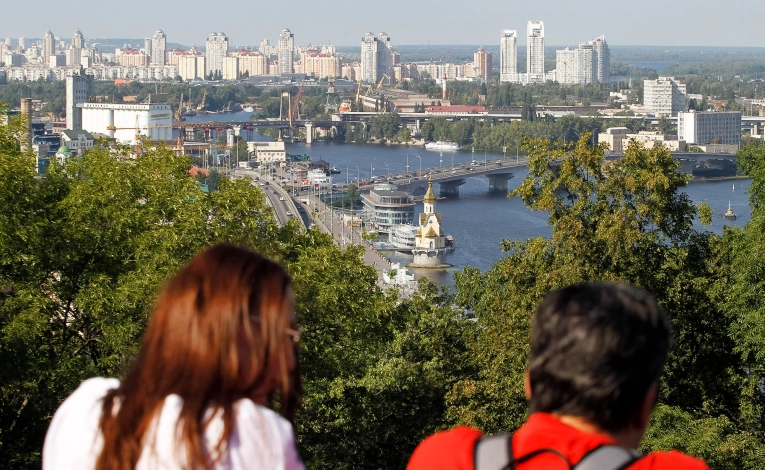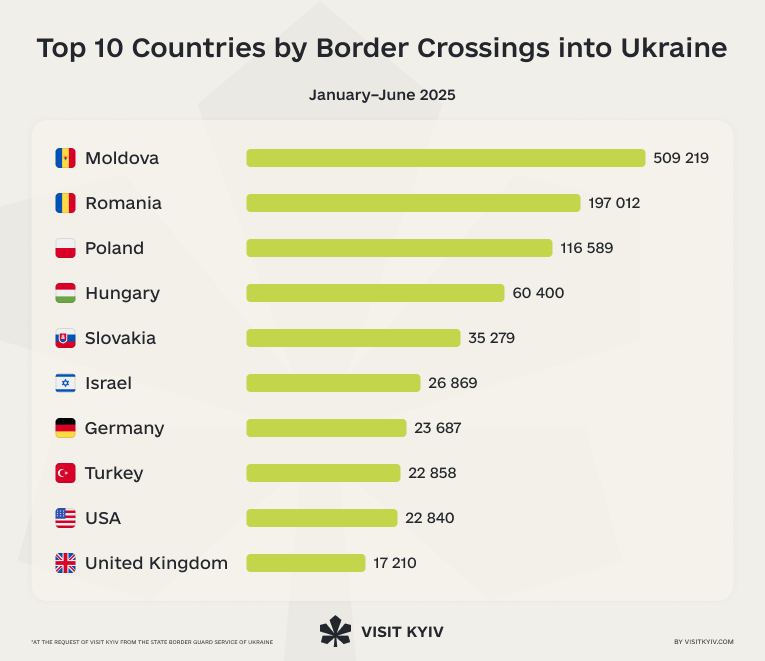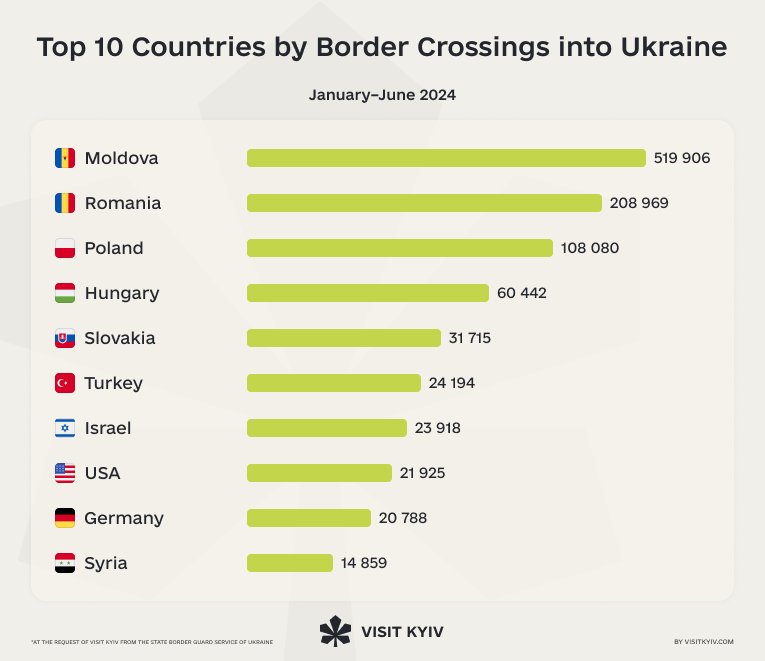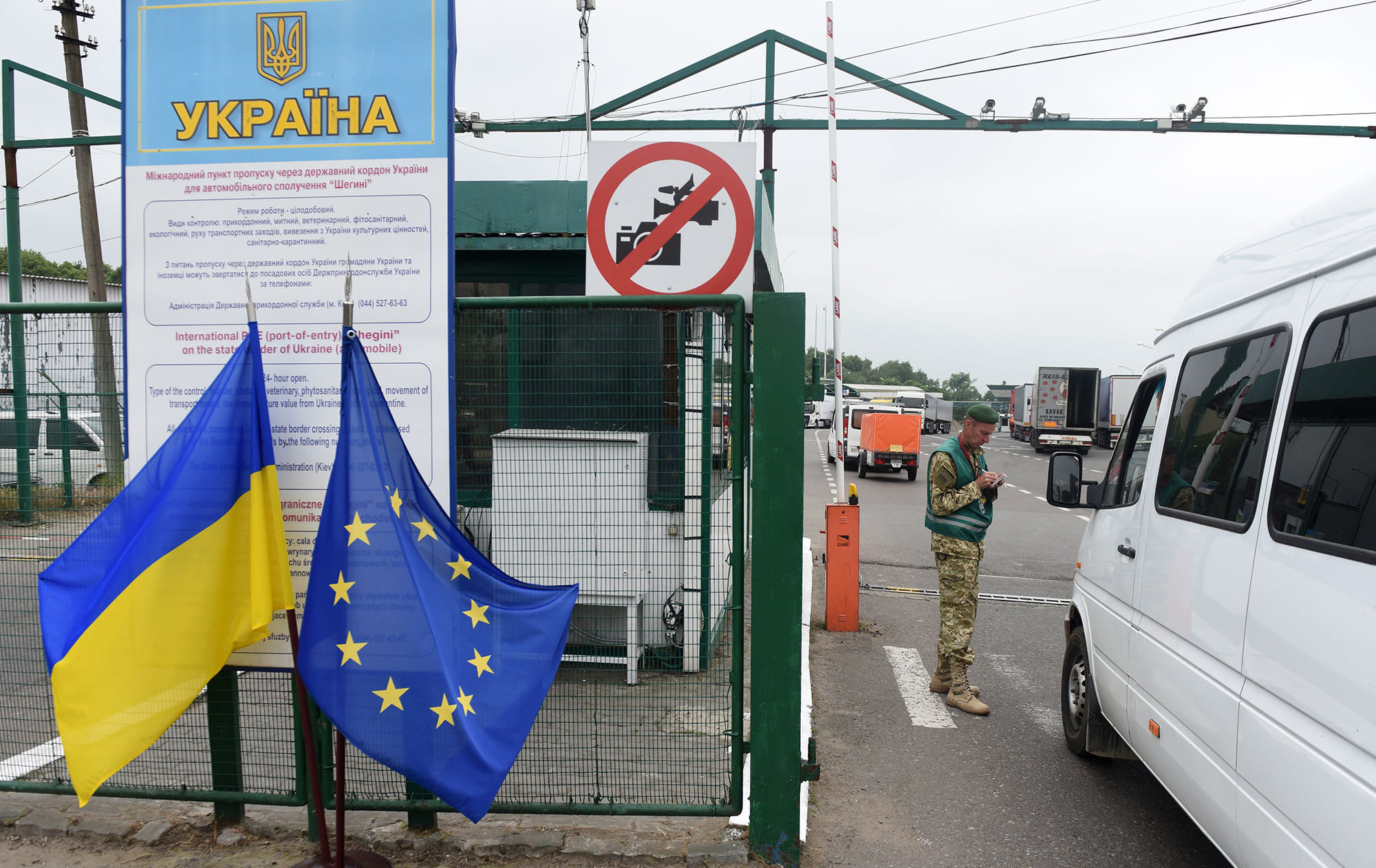Who Comes to Kyiv During the War: Statistics and Stories of Foreigners in 2025

Despite the war, thousands of tourists come to Ukraine, particularly Kyiv. Some are part of humanitarian missions or volunteer organizations, while others come to witness the war in Europe firsthand. Some even come and stay.
We analyzed the number of foreigners from various countries visiting Ukraine in 2025 and the purposes of their visits.
Ukraine’s capital exists simultaneously in two realities — war and the usual dynamics of a metropolis. Air raid sirens, attacks on civilians, and periodic power outages coincide as cultural events, festivals, and new businesses emerge. The city continues to live and pulsate despite the tragic events of recent years.
Table of contents
How many foreigners visited Ukraine in 2025, and the top 10 countries by arrivals
The flow of foreigners to Ukraine continues. According to data received by the VisitKyiv.com team from the State Border Service of Ukraine, in the first half of 2025, foreigners crossed the border into Ukraine 1,194,983 times.
For comparison, the border was crossed 1,188,466 times in the first half of 2024. The dynamics of border crossings have remained relatively stable recently.
Top 10 countries by entries into Ukraine in the first half of 2025:

Meanwhile, in the first half of 2024, the top 10 looked as follows:

Why are foreigners coming to Ukraine in 2025?
Neighbouring countries (including Moldova, Romania, Poland, Hungary, and Slovakia) rank highest in the statistics. The main reasons for crossing the border include family ties, labour migration, and transit for humanitarian cargo and trade.
Poland has the largest Ukrainian diaspora and is the central transport hub for travel between Ukraine and the EU. Romania and Moldova play a crucial role in transportation across the Danube, while Hungary and Slovakia provide logistics through Transcarpathia.
The top 10 countries for foreign nationals crossing the Ukrainian border also include Israel, Germany, Turkey, the US, and the UK. When crossing the border, most visitors indicate that their trip is for “private purposes.” Our team analyzed possible motives for visiting Ukraine, including those based on interviews with visitors to the capital.

Photo Credit: Getty Images
- Israel — a community of Israelis with Ukrainian roots; pilgrimage to Uman.
- Germany — support programs in Ukraine; projects in restoration, energy, and other areas.
- Turkey — construction and infrastructure companies; manufacturers of drones and equipment.
- USA — diplomats, journalists, analysts, representatives of charitable foundations, and support programs.
- Great Britain — journalists and documentary filmmakers; activities of NGOs and volunteer groups.
Beyond labour migration, people come to Ukraine for humanitarian and diplomatic reasons. Some come to witness the war that has taken place in Europe. For others, the Ukrainian identity appeals to them- everything from the food to the fashion, cultural events, and more. But one of the most inspiring reasons is to support the country and its people for shared values.
Solidarity tourism and the faces behind it
Solidarity tourism is a form of sustainable tourism that involves solidarity with local communities and careful use of natural resources. In the Ukrainian context, it means travelling not for “extreme” experiences, but to support and interact with local communities.
As noted by John Guillemin, an American photographer and businessman (currently residing in Poland) who has visited Ukraine numerous times both before the war and during the full-scale invasion, his visits are not about entertainment or “extreme” experiences, but about being present during a difficult time.
He compares it to visiting a friend who is in the hospital: even if you don’t bring gifts, your “hello” and your willingness to be there matter.
Here’s a strange analogy. Who doesn’t want visitors when they’re in the hospital? You come, say “hello,” maybe have lunch together, and ask how they’re doing. Then you say goodbye, and everyone feels a little better.
Klaudia Brzezinska, an IT specialist and aerial acrobatics coach, couldn’t say goodbye to Kyiv, which she only knows as a city at war.
Klaudia teaches aerial acrobatics in the capital, particularly to veterans, and explains that it was here that she discovered a courage she had not previously realized she possessed.
I always thought I lacked courage. For me, courageous people are those who fight on the front lines or carry out sabotage in Russia. It took incredible strength to do that. It was only in Kyiv that I realized courage is not just about great heroic deeds. Courage is when you are afraid, but you do it anyway. And it turned out that I have a lot of courage, although I hadn’t realized it before.
She adds that it was in Kyiv that people helped her discover this strength.
I had never been here before, and I didn’t speak Ukrainian. But at some point, I felt: I want to see this Kyiv, discover it for myself. And that was my act of courage. Thanks to this, I even created a foundation in Poland. Here, in Kyiv, I realized that I have more strength than I thought, and it changed my life.
What foreigners think about Kyiv (before and after visiting)
French architect Anthony Spennato, who moved to Kyiv with his Ukrainian girlfriend, recalls his first impressions. He says he didn’t expect to see so much greenery and was impressed by the old architecture and atmosphere of the cafés.
I was surprised by how green Kyiv is. I didn’t expect there to be trees everywhere. It’s stunning. The old architecture is also incredible. And then there’s the food, the coffee industry, the restaurants—everything is of a very high standard. Perhaps there is one downside: Kyiv is very “car-centric”; there are a lot of cars. But what impressed me most was the greenery and beauty of the old neighbourhoods.
Konrad Walter, a senior political advisor to the former German federal minister, first came to Kyiv in 2010. He admits that he didn’t have any particular expectations at the time and went there by accident.
In 2010, I went to Kyiv only because the tickets were cheap. However, in 2017–2018, I was impressed by the people who were building something new in the aftermath of the Revolution of Dignity. Art spaces, restaurants, and clubs were popping up. At the time, it seemed to me that Kyiv was the most interesting city in Europe. People asked themselves, ‘Why go to Berlin for techno when we have our own?’ And vice versa: Berliners went to Kyiv to have fun. It was an incredible feeling, and I told everyone that Kyiv had become special to me since 2017.
John Guillemin says he was most struck by the difference between how Ukraine is portrayed in the global media and what he saw there. He mentions that the country is often depicted as being in ruins and barely surviving. But in reality, his visit to Kyiv showed life continuing despite the war.
In the media, we often hear that Ukraine is on its knees and in ruins. But when you come here, you see something else: people going to work, children going to school, new businesses opening. Yes, there are signs of war, but at the same time, there is an incredible entrepreneurial spirit, an ability to live and find strength every day. Even just going out for coffee in the morning after a night of drone attacks is an act of defiance against aggression.
What you need to know before travelling to Kyiv
The war in Ukraine continues, and no city is 100% safe. To prepare for your trip, we recommend visiting VisitKyiv.com for practical tips. There, you will find helpful information about visas, insurance, accommodations, emergencies, and other beneficial advice.
We recommend paying special attention to the safety tips. Here, you will find everything you need to know about the city during wartime — including information on air raid sirens, power outages, and more.
For additional information, please contact:
Olena Polotniana
Head of Communications, VisitKyiv.com
Email: o.polotniana@gmail.com
